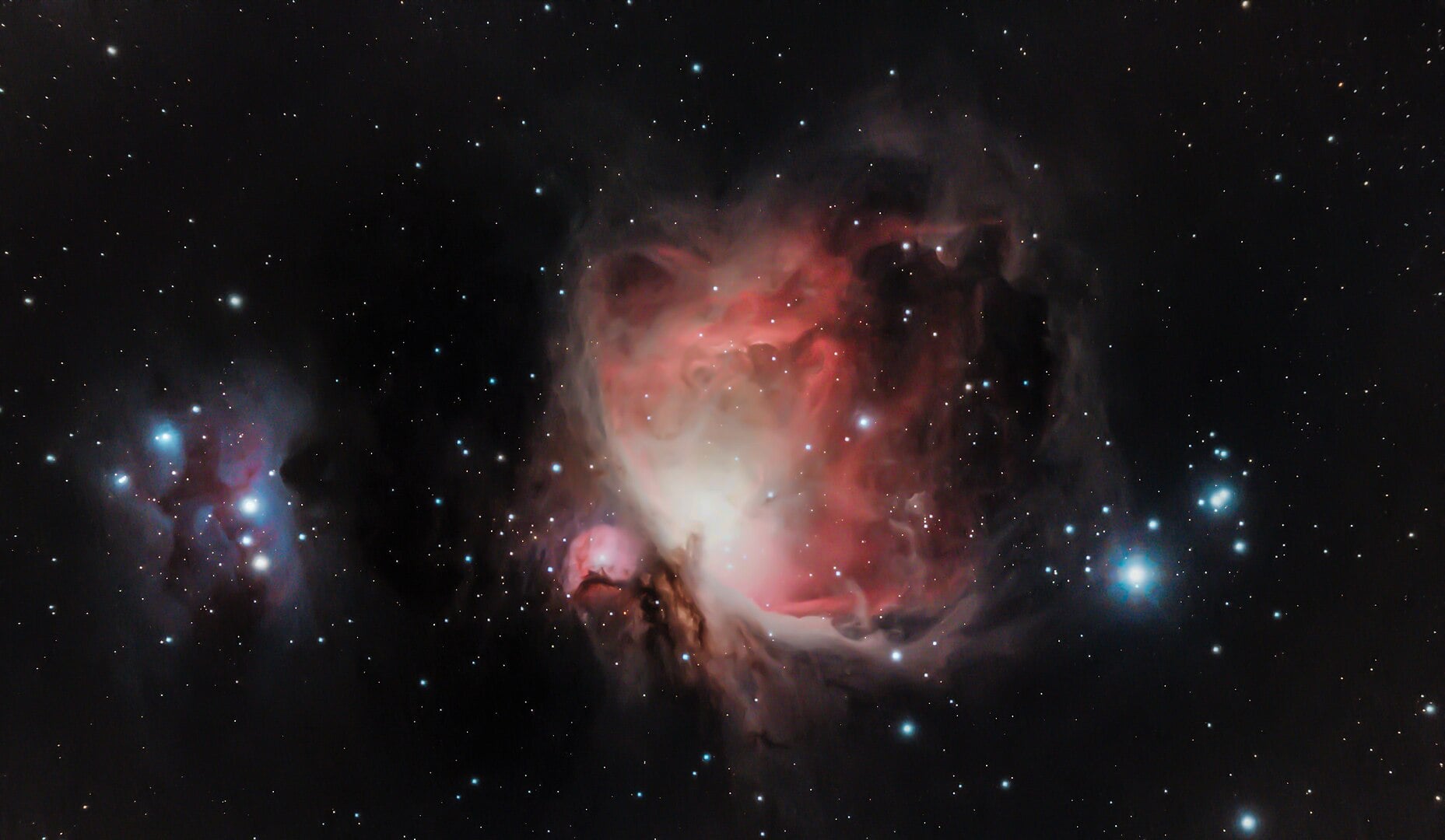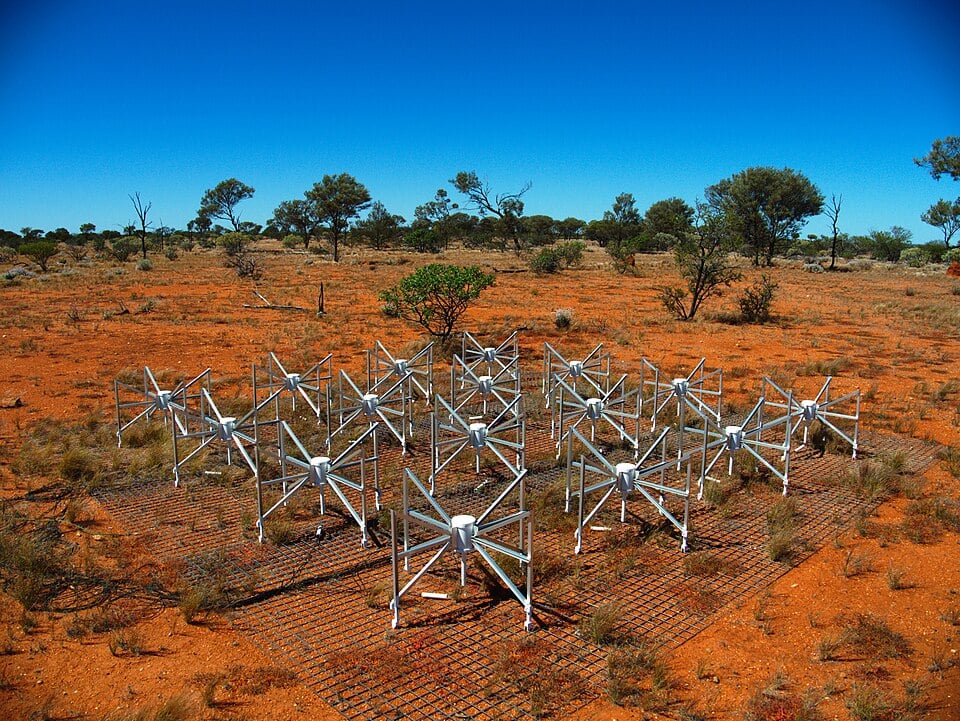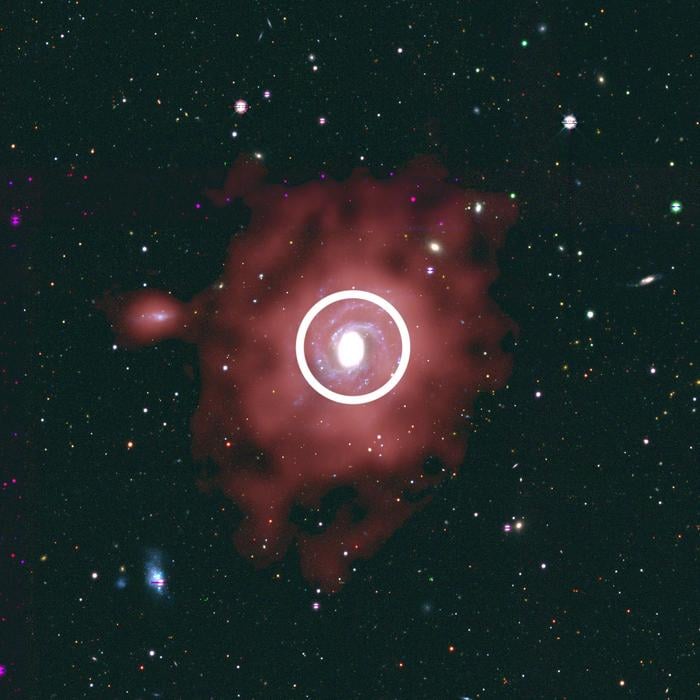Star formation in galaxies is the result of the interaction between gravity and the movement of gas. Within the spiral arms and dense molecular clouds of galaxies, vast reservoirs of hydrogen gas collapse under their own gravity, forming into stellar nurseries where temperatures and pressures become extreme enough to ignite nuclear fusion. This process transforms simple gas into blazing stars that flood their surroundings with intense radiation and powerful stellar winds, creating feedback loops that can either trigger more star formation by compressing nearby gas or shut it down by dispersing the very material needed for new stars.
 The Orion Nebula - a stellar nursery
The Orion Nebula - a stellar nursery
A team of researchers led by Seona Lee, a PhD student at The University of Western Australia have used the CSIRO Murchison Radio-astronomy Observatory in Western Australia to map gas distribution across 1,000 galaxies. Their research has led to new clues about how gas transforms into stars. The study reveals fresh insights into the star formation process by examining where gas accumulates within different galaxies as part of the large-scale Widefield ASKAP L-band Legacy All-sky Blind surveY (WALLABY) survey.
 One of the tiles making up the 32T, a prototype instrument for the Murchison Widefield Array (Credit : Natasha Hurley-Walker)
One of the tiles making up the 32T, a prototype instrument for the Murchison Widefield Array (Credit : Natasha Hurley-Walker)
The survey mapped out atomic hydrogen gas in target galaxies—far more than the few hundred possible in earlier studies. The study finds that simply having more gas doesn't guarantee more star formation. Instead, successful star-forming galaxies will have a concentration of their gas reserves in the same regions where stars already exist, creating hotspots of stellar activity. This discovery was only possible thanks to CSIRO's Australian Square Kilometre Array Pathfinder (ASKAP) telescope system, which provided the high-resolution observations needed to pinpoint gas locations and densities across an unprecedented number of galaxies.
"It was very exciting to see a correlation between star formation and where the atomic hydrogen gas is located" - Seona Lee
The importance of the finding was beautifully articulated by Professor Barbara Catinella, who co-leads the WALLABY survey. She explains that atomic hydrogen gas is like flour for baking—it's the essential ingredient for making stars, but what matters isn't the total amount you have, it's how much you're actually using.
"While different cakes require different amounts of flour, to bake a cake properly, you focus on the flour that's in the bowl, not the unused flour left in the package." - Professor Catinella
Effective star formation depends on measuring gas where stars are actively forming, not the unused reserves sitting in a galaxy's outer regions. By combining radio wave observations of hydrogen gas with visible light data from nearby galaxies, the research team demonstrated that detailed radio observations are crucial for understanding how galaxies evolve, revealing exactly how much gas is genuinely fuelling new star creation rather than just sitting idle.
 Antennas of CSIRO's ASKAP telescope at the Murchison Radio-astronomy Observatory in Western Australia (Credit : CSIRO)
Antennas of CSIRO's ASKAP telescope at the Murchison Radio-astronomy Observatory in Western Australia (Credit : CSIRO)
This groundbreaking research marks a significant leap forward in our understanding of galactic evolution and stellar formation. As ASKAP and other next-generation radio telescopes continue to push the boundaries of what we can observe, we will be able to probe deeper into the cosmic past and watch star formation unfold across billions of years of galactic history
Source :For galaxies forming stars, it's not about how much gas there is but where you find it
 Universe Today
Universe Today
